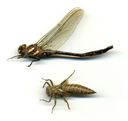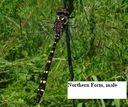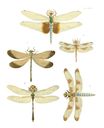Twin-Spotted Spiketail
Cordulegaster maculata
Classification
- Phylum: Arthropoda
- Subphylum: Hexapoda
- Class: Insecta
- Order: Odonata
- Suborder: Anisoptera
- Family: Cordulegastridae
- Genus: Cordulegaster
- Species: maculata
Pronunciation
How to pronounce Cordulegaster maculata: /ˌkɔrdjʊlɪˈɡæstər ˌmækjʊˈleɪtə/
These audio files are automatically generated. While they are not always 100% accurate, they are a good starting point.
Images






Summary
Cordulegaster maculata, also known as the twin-spotted spiketail, is a dragonfly of the family Cordulegastridae. Its body length varies in size from 2.5 to 3.0 inches. It was described by Edmond de Sélys Longchamps in 1854.
Physical Characteristics
7 cm; Recognized by pairs of short yellow dorsal spots on abdomen.
Identification Tips
Upper face yellow in males, brown in females. Northern Form - North of VA has a black body marked with bright yellow and sea-green eyes. Southern Form - has a brown body marked with pale yellow and aqua-blue eyes.
Habitat
Clear forest streams and small rivers, including trout streams.
Life Cycle
Late Feb to late April in South, mid-May to early Aug. in North.
Tags
- Dragonfly
- Cordulegaster maculata
- Twin-Spotted Spiketail